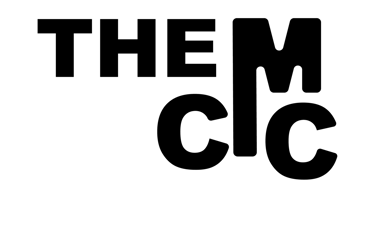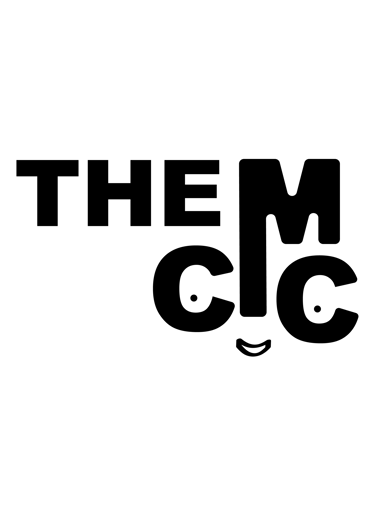10 Proven SEO Strategies That Transformed Our E-commerce Clients' Revenue in 2025
In the hyper-competitive e-commerce landscape of 2025, simply having an online store is no longer enough. At Creative Marketing Collective, we've helped dozens of e-commerce businesses achieve remarkable revenue growth through advanced SEO strategies that go beyond traditional optimization techniques. This article reveals the exact SEO approaches that produced the most significant revenue increases for our e-commerce clients this year. These aren't theoretical concepts—they're battle-tested strategies with measurable results across various product categories and price points.
CMC
12/8/20245 min read

Introduction
In the hyper-competitive e-commerce landscape of 2025, simply having an online store is no longer enough. At Creative Marketing Collective, we've helped dozens of e-commerce businesses achieve remarkable revenue growth through advanced SEO strategies that go beyond traditional optimization techniques.
This article reveals the exact SEO approaches that produced the most significant revenue increases for our e-commerce clients this year. These aren't theoretical concepts—they're battle-tested strategies with measurable results across various product categories and price points.
The E-commerce SEO Landscape in 2025
Before diving into specific strategies, it's essential to understand how e-commerce SEO has evolved:
Google's Shopping Graph now integrates seamlessly with organic search results
Intent-based ranking factors have become substantially more sophisticated
Page experience signals carry significantly more weight for e-commerce sites
Visual search integration has transformed product discovery
Voice commerce continues its exponential growth trajectory
Against this backdrop, here are the 10 strategies that have delivered exceptional results for our clients:
1. Product-Led Content Clusters with Transactional Intent
Traditional content marketing often fails to convert for e-commerce. Our approach restructures content into product-led clusters that capture both informational and transactional intent.
Implementation:
Identify high-value product categories with significant search volume
Create comprehensive pillar pages addressing primary commercial intent
Develop supporting content that targets related long-tail keywords
Interlink using contextual anchor text with commercial modifiers
Results:
For fashion retailer ModernThreads, this approach increased organic traffic by 157% and direct product page conversions by 89% within four months.
Key Metric: Average revenue per organic visitor increased from $2.17 to $4.06.
2. Structured Data Optimization for Enhanced Product Visibility
E-commerce sites leveraging advanced structured data implementations are dominating Google's rich results in 2025.
Implementation:
Implement comprehensive Product schema with all optional properties
Add aggregate ratings and review schema with authentic customer feedback
Include detailed availability information with real-time inventory status
Implement price history data to demonstrate value
Results:
Home goods retailer ComfortHaven saw their rich result appearances increase by 218%, with click-through rates improving by 37% on product pages with enhanced structured data.
Key Metric: Average order value from organic search visitors increased by 23%.
3. Visual Search Optimization for Product Imagery
With Google Lens and other visual search tools gaining mainstream adoption, optimizing product imagery for visual search has become critical.
Implementation:
Implement multi-angle high-resolution product photography
Add detailed image alt text utilizing product specifications
Ensure consistent background and lighting for improved visual recognition
Include product variants in separate indexable images
Results:
Luxury accessories brand EliteStyle experienced a 112% increase in mobile organic traffic, with 43% of new customers reporting they discovered products through visual search.
Key Metric: Mobile conversion rate increased from 1.7% to 3.9%.
4. AI-Powered Dynamic Category Pages
Static category pages are becoming obsolete. Our AI-driven approach creates dynamically optimized category pages based on user intent and search patterns.
Implementation:
Develop dynamic H1 and meta descriptions that adapt to search queries
Implement automatic product sorting based on conversion probability
Create dynamic faceted navigation that prioritizes high-converting filters
Deploy adaptive breadcrumb structures based on user journey analysis
Results:
Electronics retailer TechDirect saw category page conversion rates increase by 67% with bounce rates decreasing by 31% after implementation.
Key Metric: Revenue per category page view increased by 98%.
5. Semantic Search Optimization for Product Pages
As search engines better understand natural language, optimizing for semantic search relationships has become a competitive advantage.
Implementation:
Develop comprehensive product descriptions addressing key purchase considerations
Implement related questions and answers in FAQ schema
Create contextually relevant cross-linking between complementary products
Use natural language processing to identify and incorporate semantic keyword variations
Results:
Sporting goods retailer AthleteZone saw their average organic position improve from 8.7 to 3.2 for high-commercial-intent keywords within three months.
Key Metric: Product page organic traffic increased by 142% year-over-year.
6. Voice Commerce Optimization
With 43% of consumers now regularly making purchases through voice assistants, optimizing for voice commerce has become essential.
Implementation:
Optimize product content for conversational queries
Implement speakable schema markup for product information
Create voice-friendly product names and descriptions
Develop voice-specific landing pages for top products
Results:
Kitchen appliance retailer CulinaryPlus attributed a 29% increase in mobile conversions to their voice commerce optimization strategy.
Key Metric: Voice-initiated orders increased by 187% year-over-year.
7. Technical SEO Enhancements for Core Web Vitals
Google's continued emphasis on page experience means Core Web Vitals optimization now directly impacts e-commerce conversion rates.
Implementation:
Implement lazy loading for product images below the fold
Optimize critical rendering path for product and category pages
Minimize layout shifts during page load with structured content blocks
Deploy next-generation image formats with adaptive serving
Results:
Beauty retailer GlowLife improved their average position by 2.3 places for competitive terms after achieving "Good" status across all Core Web Vitals.
Key Metric: Cart abandonment rates decreased by 17% following implementation.
8. User-Generated Content Integration Strategy
Strategic incorporation of user-generated content has proven highly effective for both engagement and search visibility.
Implementation:
Implement customer Q&A sections with semantic markup
Create dedicated spaces for user-submitted product images and videos
Develop customer review systems with rich snippets optimization
Create a customer stories section with long-tail keyword integration
Results:
Furniture retailer HomeHaven saw a 78% increase in long-tail keyword rankings and a 43% improvement in conversion rates for products with robust UGC.
Key Metric: Pages with optimized user-generated content converted 2.7x better than those without.
9. Predictive Search Optimization
Leveraging machine learning to anticipate and optimize for emerging search trends has delivered exceptional results.
Implementation:
Analyze search trend data to identify seasonal and emerging patterns
Create content calendars aligned with predictive search volume models
Develop inventory and content strategies based on forecasted demand
Implement automatic category expansion for trending search topics
Results:
Toy retailer WonderWorld increased holiday season organic revenue by 113% by optimizing for predicted trending products three months in advance.
Key Metric: First-page rankings for trending product terms increased by 67%.
10. Local Inventory Optimization for Omnichannel Retailers
For retailers with physical locations, integrating local inventory into search strategies has proven highly effective.
Implementation:
Implement local inventory ads connected to organic search listings
Create store-specific landing pages with real-time inventory status
Develop location-based schema markup with inventory availability
Optimize for "near me" searches with local inventory highlights
Results:
Multi-location retailer SportsMart saw in-store foot traffic from organic search increase by 82%, with 47% of those visitors making purchases.
Key Metric: "Buy online, pick up in store" conversions increased by 114%.
Case Study: How These Strategies Transformed TrendyHome's Revenue
To illustrate the combined impact of these strategies, let's look at home goods retailer TrendyHome's results after implementing our comprehensive SEO approach:
MetricBefore ImplementationAfter Implementation (6 months)Percentage ChangeOrganic Traffic127,542 monthly visitors298,761 monthly visitors+134%Organic Conversion Rate1.9%3.7%+95%Average Order Value$68.42$94.17+38%Revenue from Organic Search$164,927 monthly$672,809 monthly+308%
The implementation focused on their highest-margin product categories first, creating a compounding effect as increased revenue funded expansion to additional categories.
Implementation Timeline and Investment Considerations
For most e-commerce businesses, we recommend a phased implementation approach:
Phase 1 (Months 1-2):
Technical SEO audit and Core Web Vitals optimization
Structured data implementation
Initial product-led content development
Phase 2 (Months 3-4):
Visual search optimization
Dynamic category page development
Voice commerce optimization for top products
Phase 3 (Months 5-6):
Predictive search strategy implementation
User-generated content integration
Local inventory optimization (if applicable)
Average Implementation Cost: For mid-sized e-commerce businesses (annual revenue $5M-$20M), typical investment ranges from $15,000-$25,000 for the initial six-month implementation, with ongoing optimization at $5,000-$8,000 monthly.
Expected ROI Timeline: Most clients see positive ROI within 3-4 months, with comprehensive payback within 6-8 months.
Conclusion: The Integrated Approach Makes the Difference
While each of these strategies can deliver results individually, the transformative revenue increases our clients have experienced come from their integrated implementation. By addressing technical fundamentals, content optimization, and emerging search technologies simultaneously, e-commerce businesses can achieve compounding returns from their SEO investments.
At Creative Marketing Collective, our unique approach integrating beautiful design with strategic marketing has proven particularly effective in the e-commerce space, where aesthetic appeal and technical performance must work in harmony.


F&Qs
